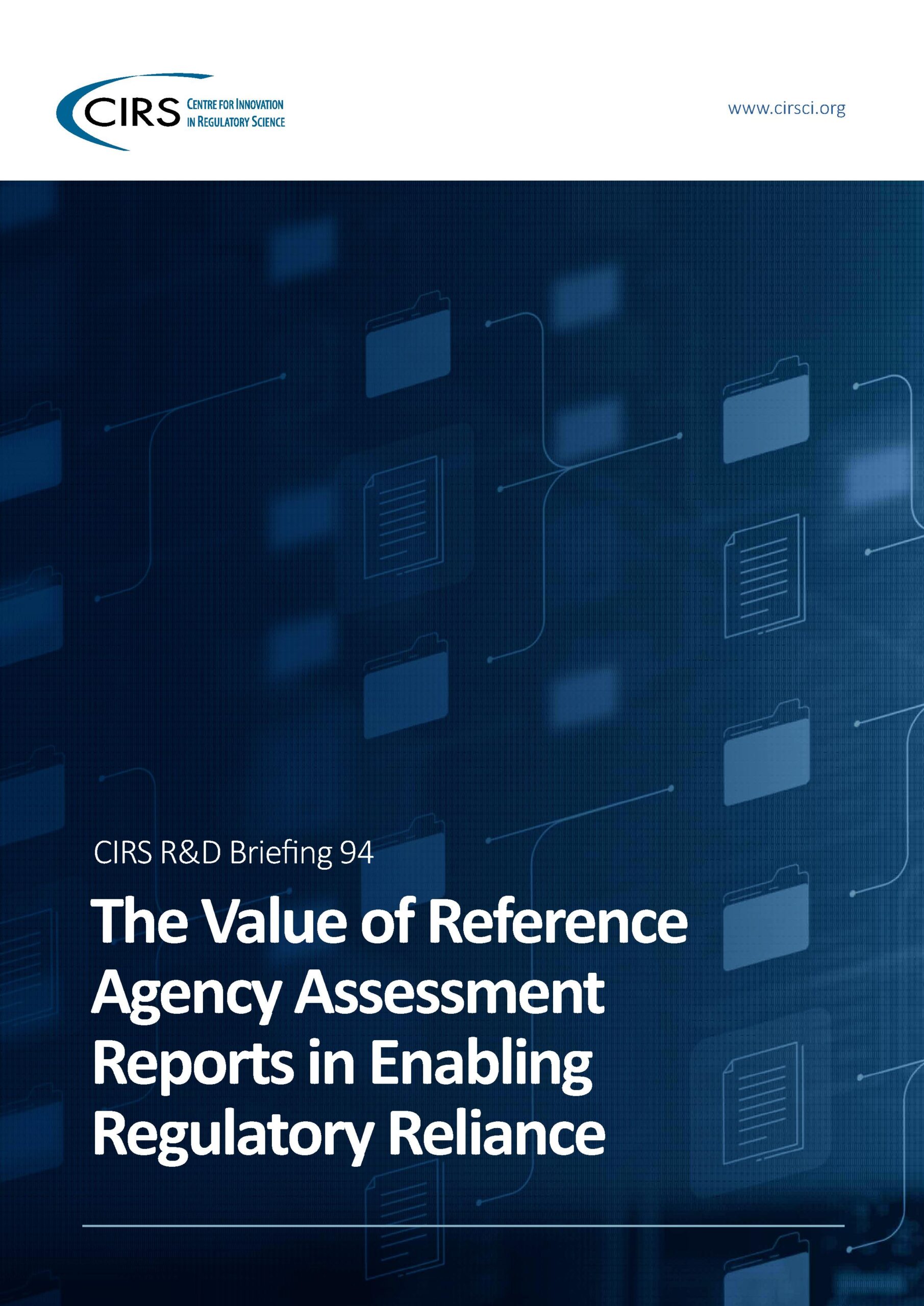Access to information, including the assessment documents of reference national regulatory agencies (NRA), is a key enabler of regulatory risk-based decision making. It promotes an understanding of what was reviewed by the reference NRA, provides a rationale for decision making and promotes confidence and trust.
This CIRS R&D Briefing focuses on a study that aimed to better understand the provision of regulatory review documents and reports – what type of documents are requested, how often and how they are being used for risk-based decision making (e.g. reliance). An additional objective was to understand perspectives and the interpretation of unredacted assessment reports (UAR) in order to determine if a better terminology for UARs may be appropriate. The study, which comprised of two perception surveys, one of companies and the other one of relying NRAs, focused on evaluating the use and importance of non-public documents (e.g. full assessment reports), as well as public documents (e.g. public assessment reports) during a reliance review. Responses were received from 11 major pharmaceutical companies and 10 NRAs globally. Due to a relatively low response rate, the below findings may therefore not always reflect the overall landscape.
Based on findings from these surveys – non-public documents are seen as key for the purpose of reliance, primarily to enable evaluation of product sameness and to understand NRA decision making. Non-public documents were mostly provided by the applicant and submitted as “unredacted”. However, some degree of redaction occurs in most cases, such as personal identified data from the reviewers, which is often based on the laws and regulations of the NRA that are beyond the control of the sponsor (for example, see for EMA). Therefore, it may be helpful to move away from the term ‘unredacted assessment report’ and instead refer to the documents as ‘non-public assessment reports’ (NPARs), where the company or the reference NRA could further specify what information as redacted.
Challenges exist regarding the provision of non- public documents and need to be addressed to ensure an efficient risk-based review processes, including reliance. For example, better transparency on the documentation requirements and rationale, more timely provision of high quality and complete non-public documents, improved and secure communication channels for sharing the documents and efforts to build trust among stakeholders are needed. The development of best practices on what reference NRA assessment reports should contain could also be helpful, to not only existing reference NRAs but also future ones.
In addition, it appears that NRAs vary in their processes, depth and extent of review of the reference NRA non-public documents for the purpose of reliance. The NRAs also differ in terms of what is assessed for the purpose of sameness evaluation and what, according to the NRA, needs to be identical vs. can be different. Harmonisation, convergence of requirements, processes and guidances across NRAs, as well as minimisation of local requirements could ensure best practice across NRAs. This could enable more efficient submission by companies, processes by NRAs, and ultimately enable timely approval of medicines through reliance.
The study also uncovered that public documents alone are generally not required or utilised by the NRAs for the purpose of reliance. However, companies still generally submit them to the NRAs undertaking a reliance review. Their availability as well as completeness and quality was highlighted as a challenge by NRAs, whereas the use of PARs is being promoted by the World Health Organisation (WHO) to enable timely reliance. This gap needs to be addressed to ensure that PARs meet their evolving purpose and can support reliance review. Participting NRAs suggested for example that the introduction of internationally agreed best practices on the content of PARs, more timely availability of PARs for different application types, as well as best practices and training on utilising PARs for the purpose of reliance, could support consistency and transparency of risk-based decision making.
Questions?
If you have any questions or comments on this study, please get in touch with Dr Magda Bujar: mbujar@cirsci.org

